Most mornings, Eduardo Gonzalez wakes up long before dawn and heads east, towards a collection of plywood and chicken-wire shacks on a friend's property in Bennett. Inside is his pride and joy, a collection of more than 200 pigeons, some raised from eggs, others shipped in boxes from Belgium or the Netherlands. Each wears a tiny band on its leg, proof they belong to the Tuna Family Loft.
Tuna, another word for a cactus pear, is what most of the metro area's pigeon racers call Gonzalez.

On practice days, he gingerly steps into the coop and carefully gathers a few dozen birds, placing each in a crate as the flock coos around him. He loads his winged athletes into his car, cranks Bad Bunny, and absorbs the rhythm while he drives toward the brightening horizon. He's at peace when he finds the spot to let them free. As the sun rises, he opens his crates and his birds take off. He watches as they fly circles in tight formation above him before instinctively heading home.
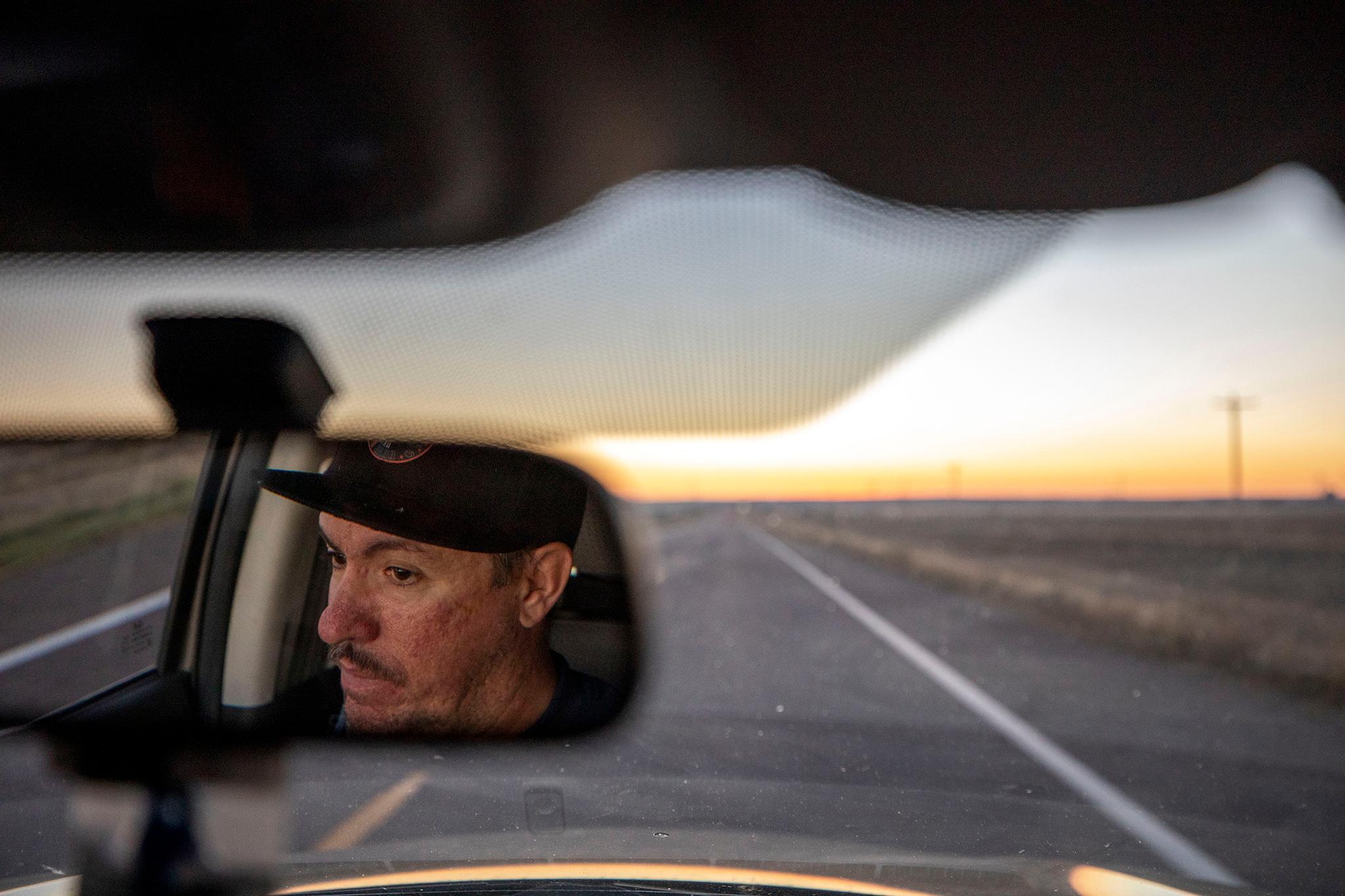
We met Gonzalez after one of his birds, #126, ended up at a DIA warehouse.
"Is someone missing a homing pigeon? It flew into my shop about an hour ago and has just been chillin," Reddit user Gnarly_Sarley posted last month. "It has an American Racing Pigeon Union tag and apparently its name is 'Tuna.'"
This, amazingly, was all the information both we and Gnarly needed to track Gonzalez down. It turns out there's a national database of racers, and the little bird that ended up in Gnarly's warehouse was registered.
Gnarly gave the pigeon some water and called Gonzalez, who said it ought to fly away on his own accord. It took hours, but when Gnarly got back to work the next day, the bird was gone.
"It was very very hot, especially that day," Gonzalez said last week after he released #126, again, for a practice run. "And I released him late."
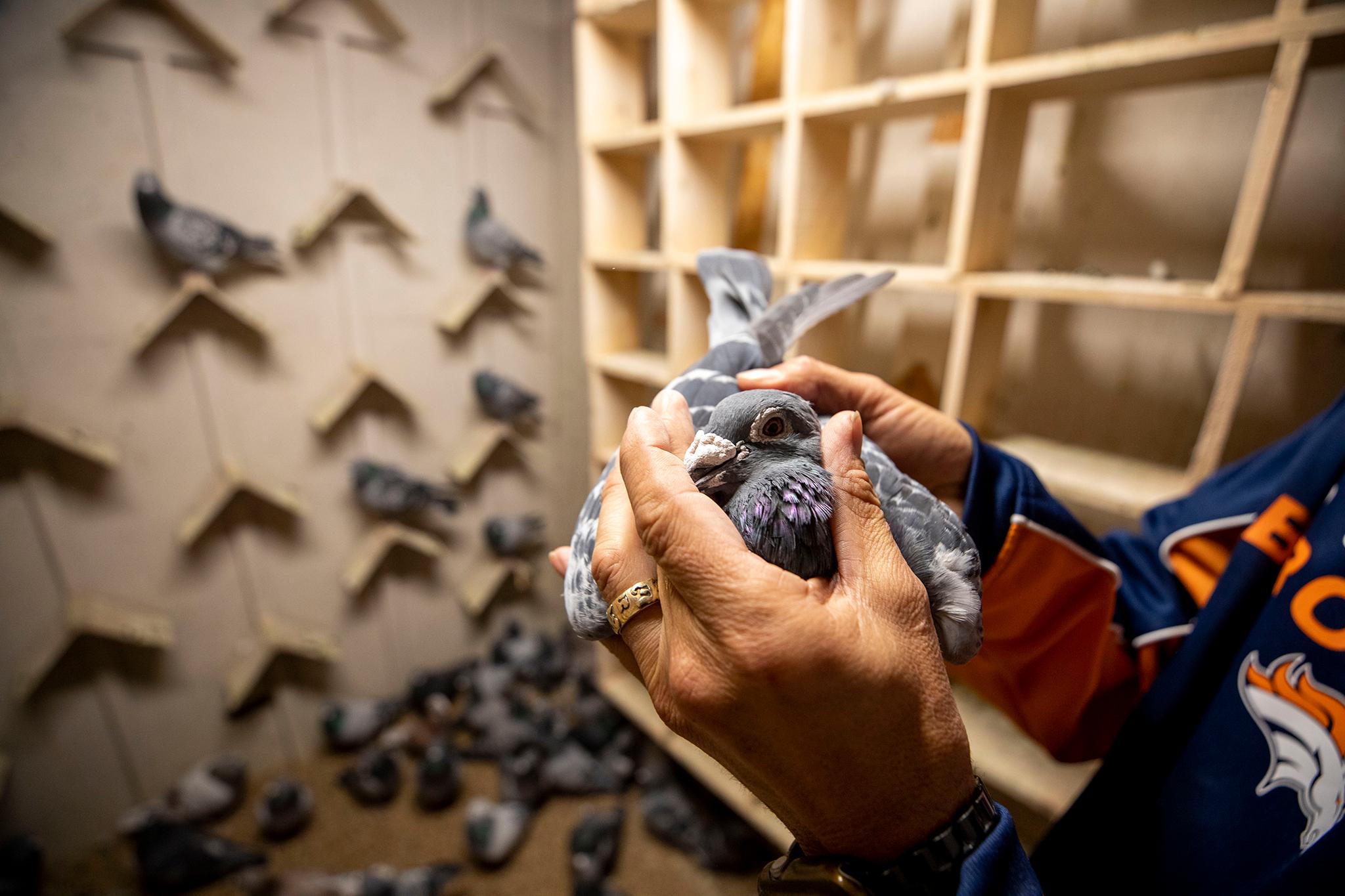
There's only so much you can control as a racer, he said. You go out at the crack of dawn to avoid the heat of the day. You keep an eye on the weather. You check your birds' feathers and muscles to make sure they're fit to fly. You feed them. You treat them in sickness and when they're hurt. You let them fly shorter distances to build muscle and get a lay of the land.
But the thing about this sport is: you have to let go.
"There's no control," he told us. "The control is only in my loft. When it's outside, I can do nothing."
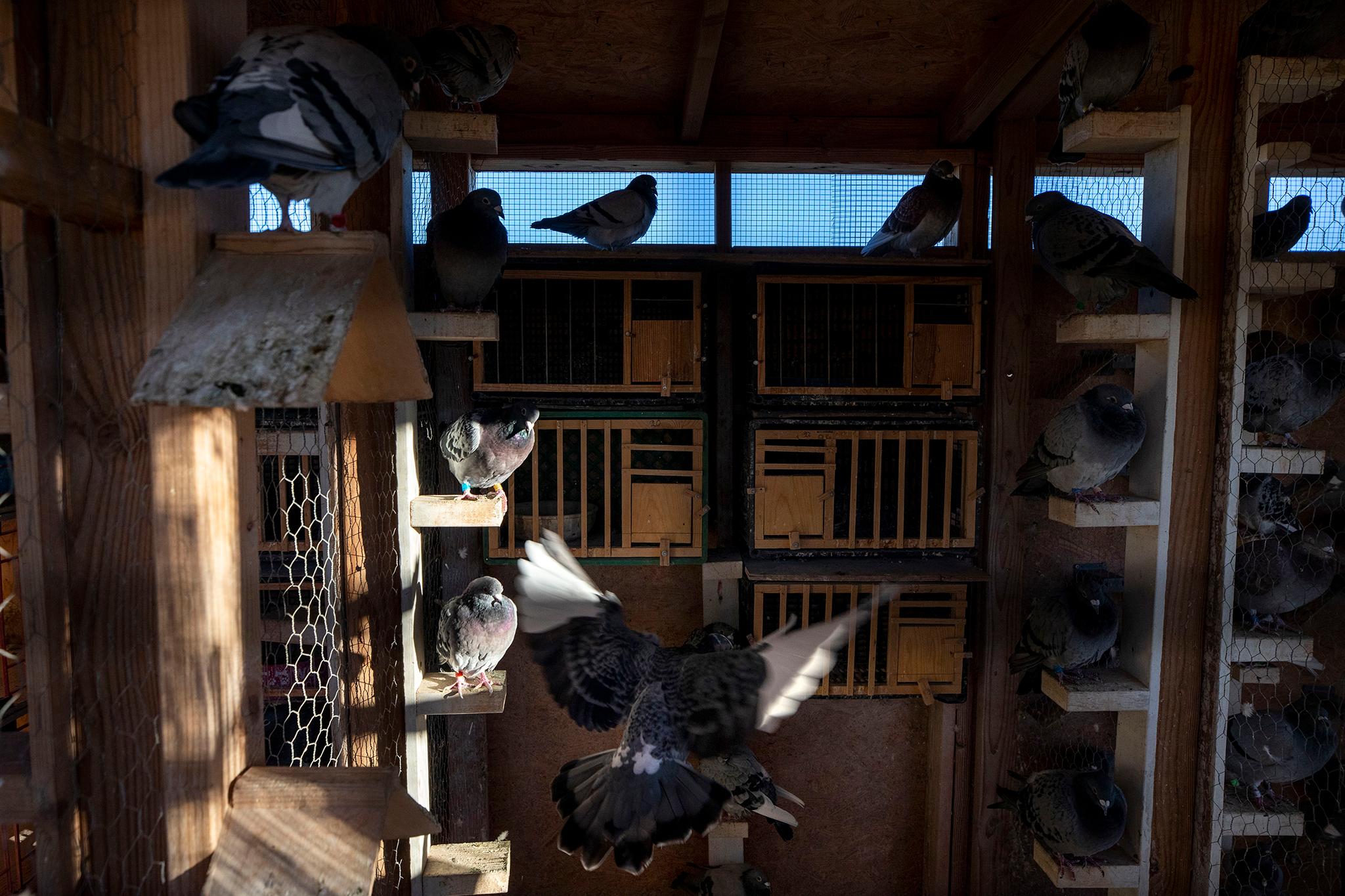
Though they're released in groups, birds often end up on their own as they fly home. If they run into rain, they might detour around it. If its hot, or if they get thirsty, they may wander off-course to find a drink.
Eventually, most make it back, but it's not always guaranteed. The world can be dangerous for these little birds, and sometimes a peregrine falcon or a hunter might end their flights prematurely.
Pigeon racing is a very old pastime. Here's how it works:
Garth Spellman, curator of ornithology at the Denver Museum of Nature and Science, said while racing is relatively new, humans have been exploiting pigeons' unique ability to fly home for millennia.
"The earliest record, I believe, dates back to Julius Caesar," he said, "so it's quite a long time."
Pigeons have one trick when it comes to navigation: they fly home. People who used them to send messages first brought them long distances, then released the birds when it was time to send word back where they were raised.

While scientists aren't completely sure how they know where to fly, Spellman said they do know that pigeons rely on exceptional eyesight.
"Like most birds, pigeons definitely use landmarks to navigate, so they have to be flying over territory they know and are familiar with, and that's pretty straightforward," he said.
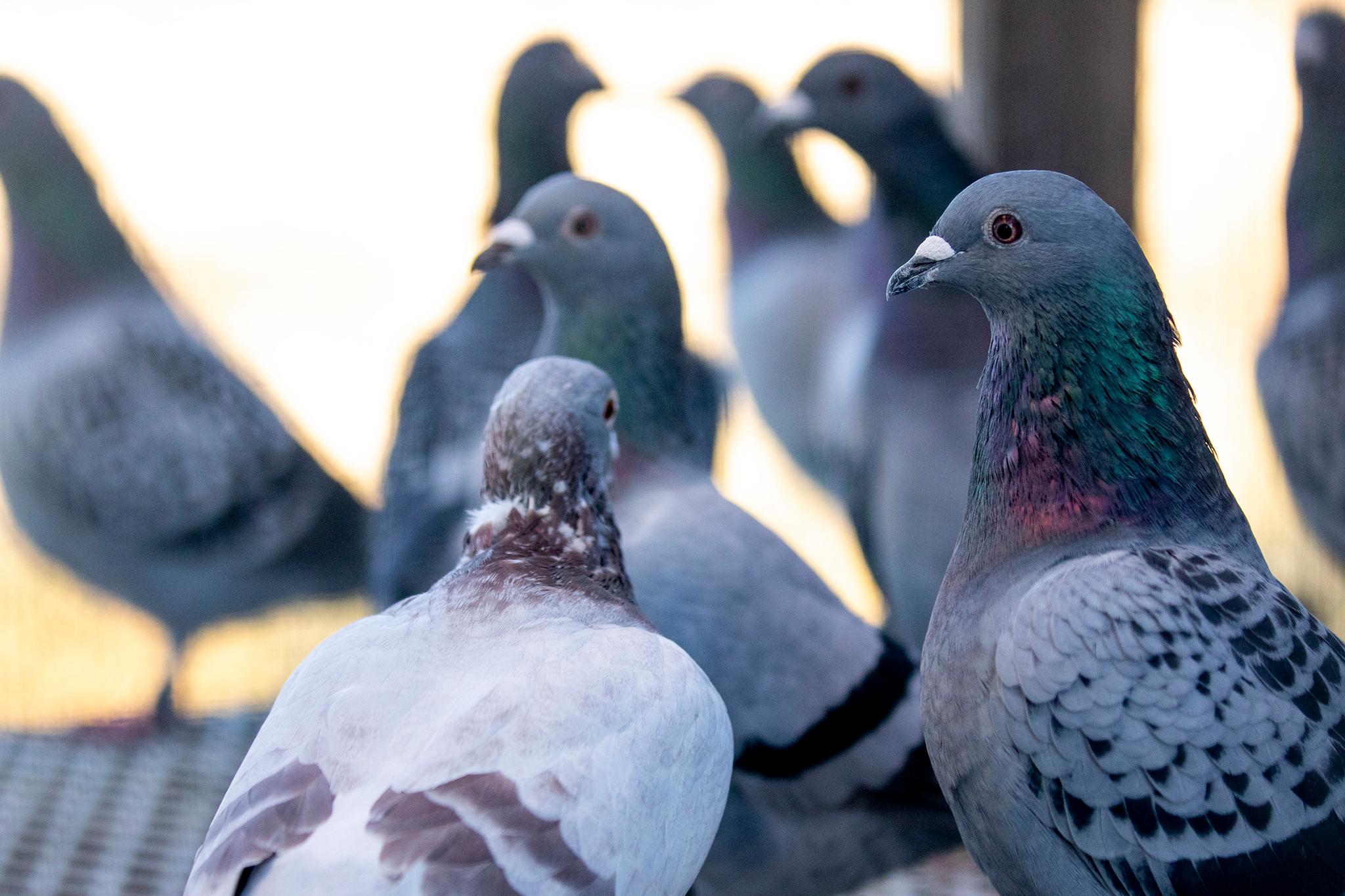
What's less understood is the animals' ability to detect magnetic fields. Spellman said researchers have identified magnetically-sensitive material in both pigeons eyes and ears. It might suggest they can actually see these fields as they fly, like an extra layer of vision, or otherwise feel them in their bones.
"We know that they do it, and it's fascinating and absolutely amazing that they do it, but we don't know how it's done," Spellman said.
According to the Oklahoma-based American Pigeon Racing Union, homing pigeons first came to the U.S. in the mid-1800s and the first racing club appeared in 1872. In 1883, the Federation of Homing Pigeon Fanciers of America was established to maintain a permanent registry of speed records, beginning a new era for the hobby. The APRU's 1909 founding created a national governing body under which clubs across the country could operate as independent chapters.
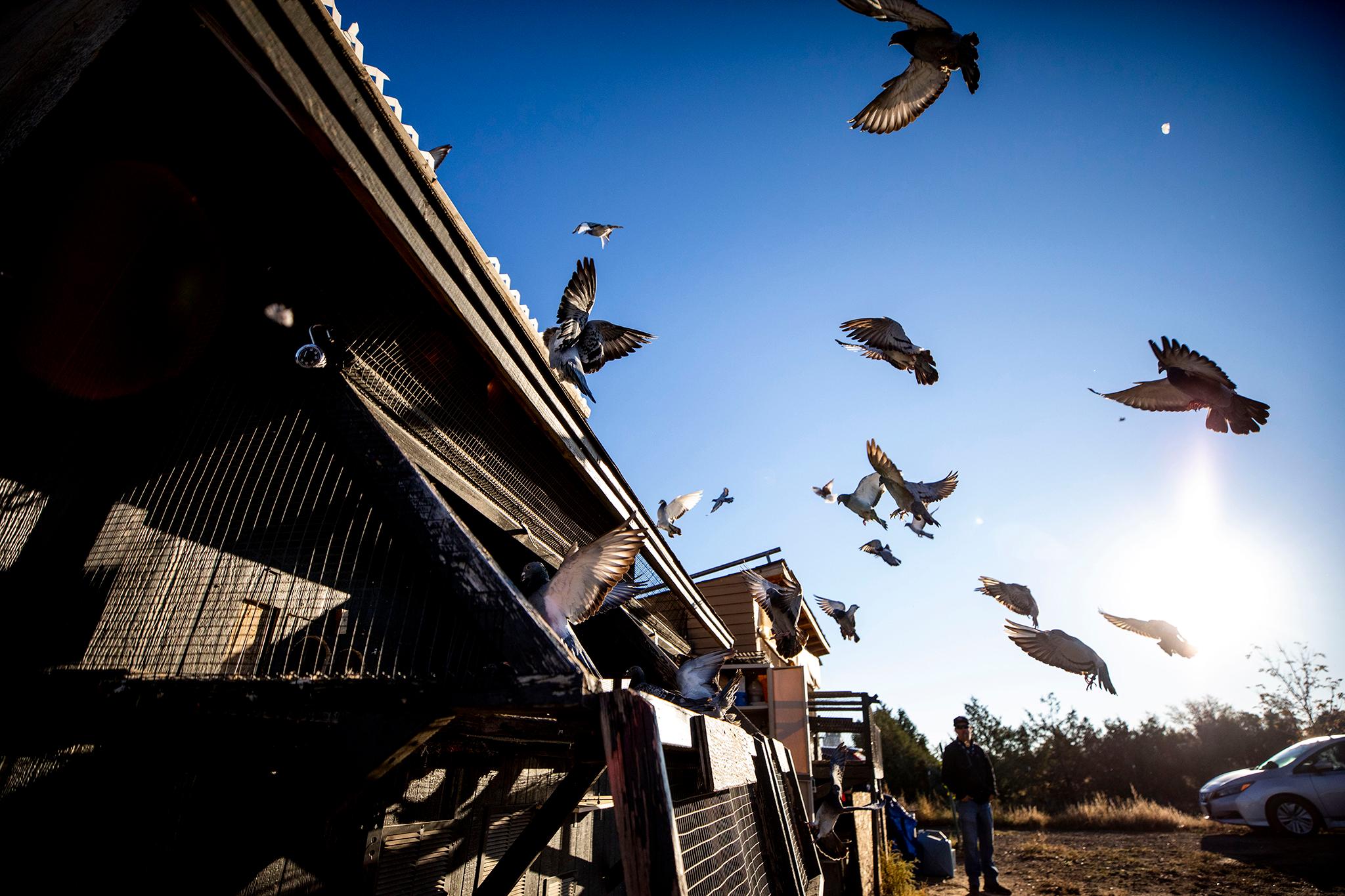
Deone Roberts, who we reached at the APRU, told us races are judged by complicated arithmetic. While birds start at the same place, they often end at different finish lines, since each only flies back to the roost where it was trained. For a century, racers scrawled times and distances onto paper forms to calculate scores. Today, most of that is handled by automatic electronic systems that scan chips in bands wrapped around birds' legs.
Hobbyists join clubs where they pay dues and entry fees for regular events. Some of these races have enormous prizes, like the Hoosier Classic, which can pay out over $1 million to winners.
Gonzalez's club, Denver International CA, holds races once a week, weather permitting. On a recent Saturday, Gonzalez's birds were loaded onto a truck with a dozen other racers' and driven overnight to Kansas. At dawn, they were released back to fly back west. Gonzalez has earned thousands of dollars in these races, but he didn't win that day.
Win or lose, Gonzalez, who's worked hard for decades to support his family, said the sport is mostly an escape.
Gonzalez said he learned everything he knows - how to train and care for his flock - in Jalisco, Mexico, where he grew up. He's lived in Colorado for almost 30 years, and he brought the pigeon-racing tradition with him when he arrived.
He spent nearly all of that time working at a chic European bistro in Aurora, where he's a bar back. He also runs shifts at the Stampede nightclub, where he sometimes leaves in the early morning and heads straight to his loft to await birds arriving from races.
"Sometimes, I'll get off work at four in the morning, go to my house, take lunch, maybe a couple cervezas and I come over here," he said. "I bring my blanket and I sleep in my loft, that way I don't miss any pigeons."
On other race days, when the autumn air is crisp, he'll bring his wife and four kids out to picnic and watch the birds land. His daughter, in particular, has taken an interest in his hobby.
Gonzalez said his journey here, his long nighttime hours and the mental charge he gets from caring for these birds has all been for his family. Thirty years in, he's just completed a major milestone in that work.
"We came from Mexico to live better, that's it, and sometimes to make dreams true," he said. "Tomorrow, it's coming true for once, getting my new house. We're signing tonight, me and my kids. That's one of my dreams."

As his birds shipped off to Kansas for a 300-mile race, Gonzalez prepared to move his family into a new home in Montbello. Someday, he hopes to relocate his loft to his new backyard, though he'll have to wait and see if his neighbors accept his birds.
In the meantime, he's content to make the drive east to Bennett, absorbing the music as he drives, to find a little peace with his flock.
"I relax. I forget my problems. I forget everything for a couple hours," he said. "I love it."











